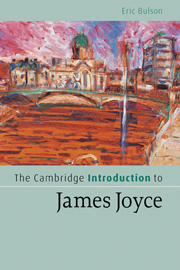Chapter 2 - Contexts
Published online by Cambridge University Press: 05 June 2012
Summary
Joyce the modernist
By the time Joyce was twenty-six years old, he had tried out a number of possible career paths without any real success. According to Stanislaus's calculations, his older brother failed as “a poet in Paris, as a journalist in Dublin, as a lover and novelist in Trieste, as a bank clerk in Rome, and again in Trieste as a Sinn Feiner, teacher, and University Professor.” He was right on all accounts except one. Joyce “the novelist” had not in fact failed. When Stanislaus made this observation, his brother was in the process of revising Stephen Hero into A Portrait of the Artist as a Young Man. It was a decision that officially marked his turn away from nineteenth-century naturalism and toward the formal and linguistic experimentation that we have come to identify more generally with literary modernism. If it is not surprising that Joyce became a professional writer, one who enjoyed success in his own lifetime (a rare fate for writers), it is surprising that he managed to write the kinds of fiction he did. Nothing quite like Ulysses or Finnegans Wake existed before and the literary landscape was not the same afterward. Revolutionary thinkers like Joyce do sometimes arrive in the world, and it is through them that an entire age is defined. If we cannot always explain how they become visionaries, we can identify some of the contexts in which they develop.
- Type
- Chapter
- Information
- The Cambridge Introduction to James Joyce , pp. 17 - 31Publisher: Cambridge University PressPrint publication year: 2006



